May can be summed up in one word, busy. We have been busy planting, maintaining and picking.
This year we had the new experience of planting tomatoes and then row covering them to protect them from the frost that night.
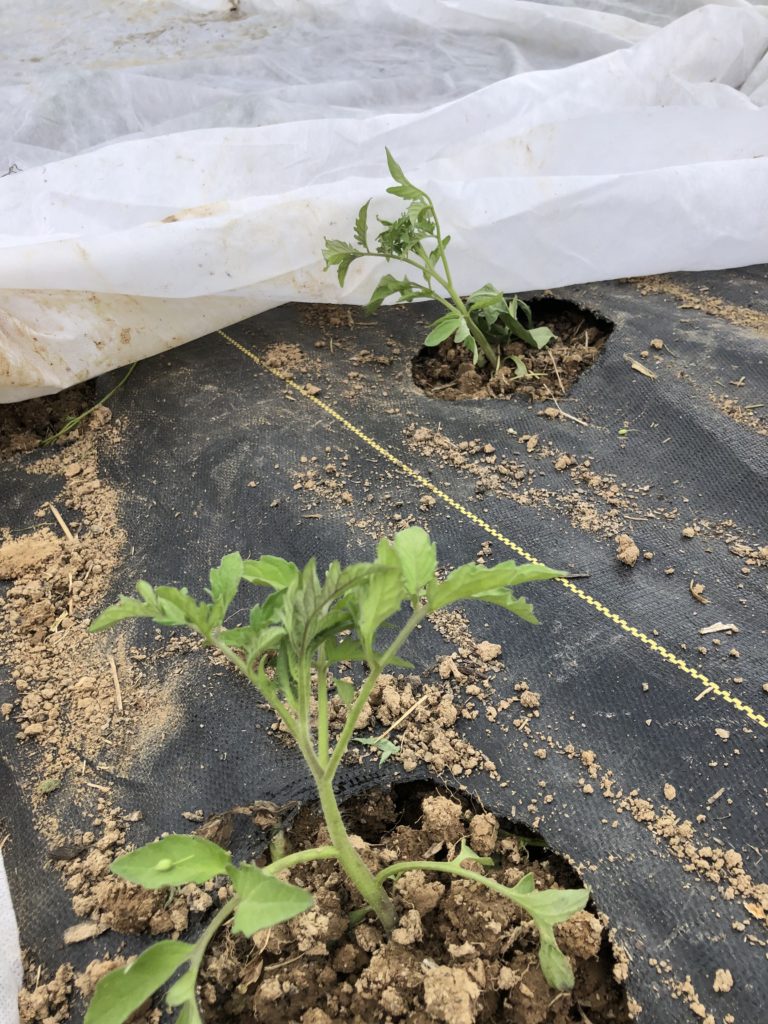
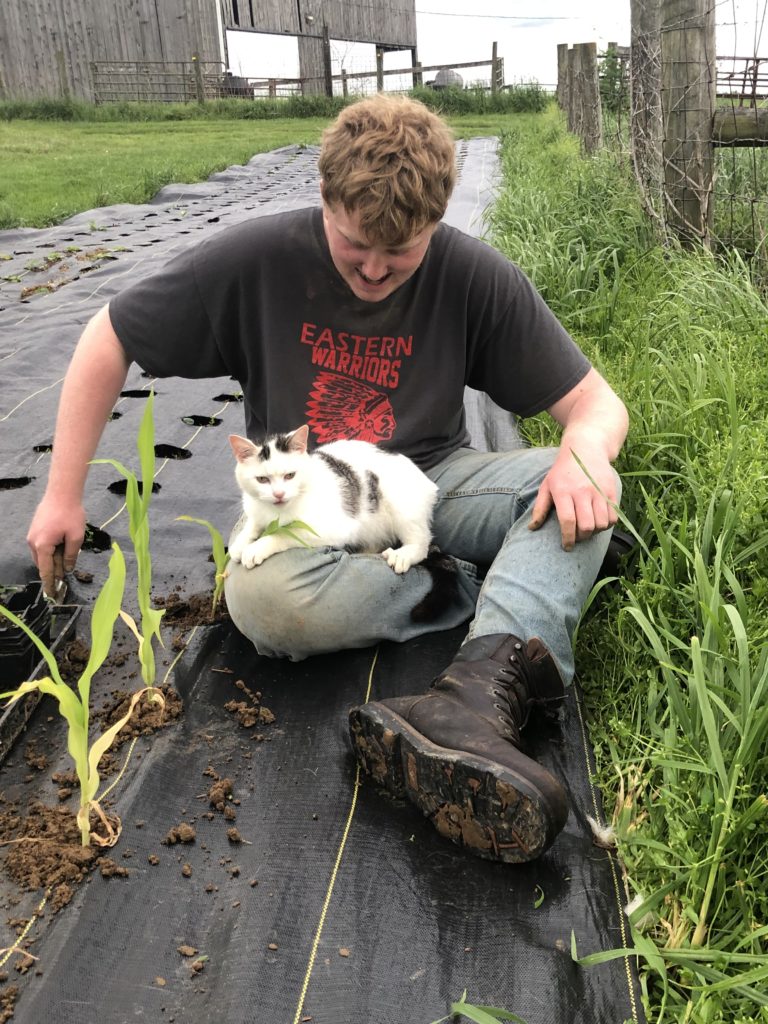
It’s very difficult to get time away from the farm with all the animals and plants that need care, but thanks to our amazing neighbor we were able to take a weekend away to see our son graduate from college. While our family had a great weekend together, a fox had a great weekend too. With no one being around on the farm a fox was able to drag off several of our chickens. Once we got back we immediately moved the chickens very close to the house in hopes of keeping the fox away but that rascally fox even came up by our house. So far, however, the chickens have been safe.

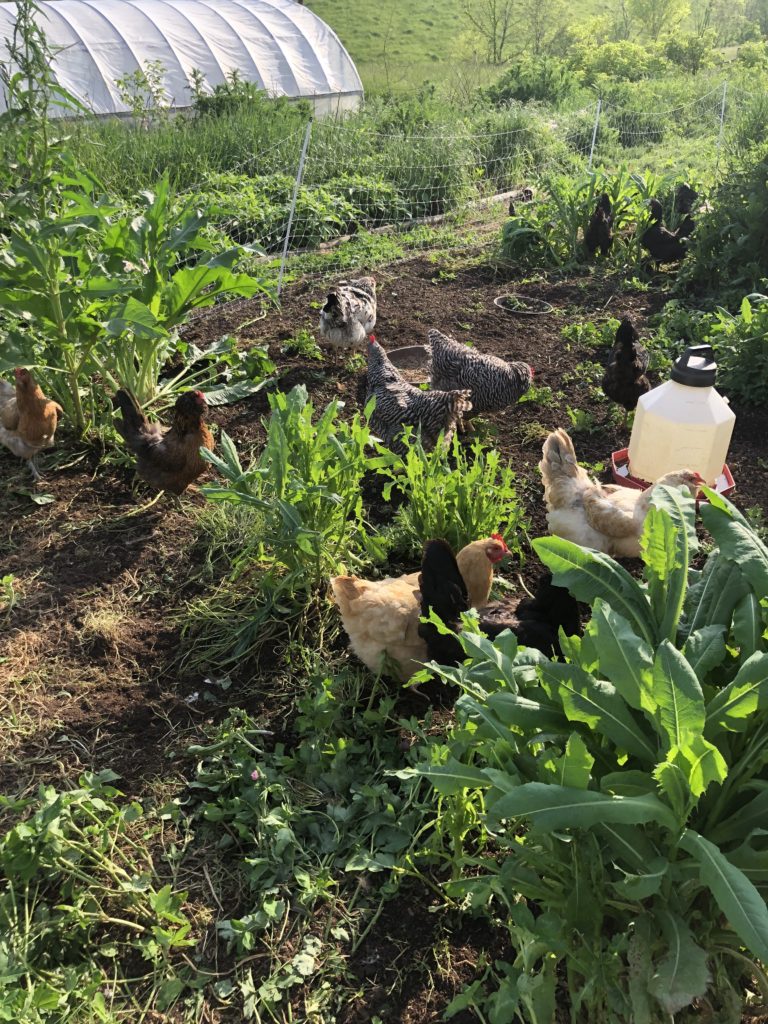
Our summer CSA started on the 26th, which was later than we had originally planned because of our son’s graduation. This actually turned out to be a blessing in disguise. The much cooler than average temperatures in early May had slowed down plant growth so we were glad for the later start date. Despite the slow start, the warm weather from the latter part of May has the plants really growing. We had a variety of vegetables ready for the first CSA including lettuce, beets, broccoli, asparagus, and other equally yummy vegetables.
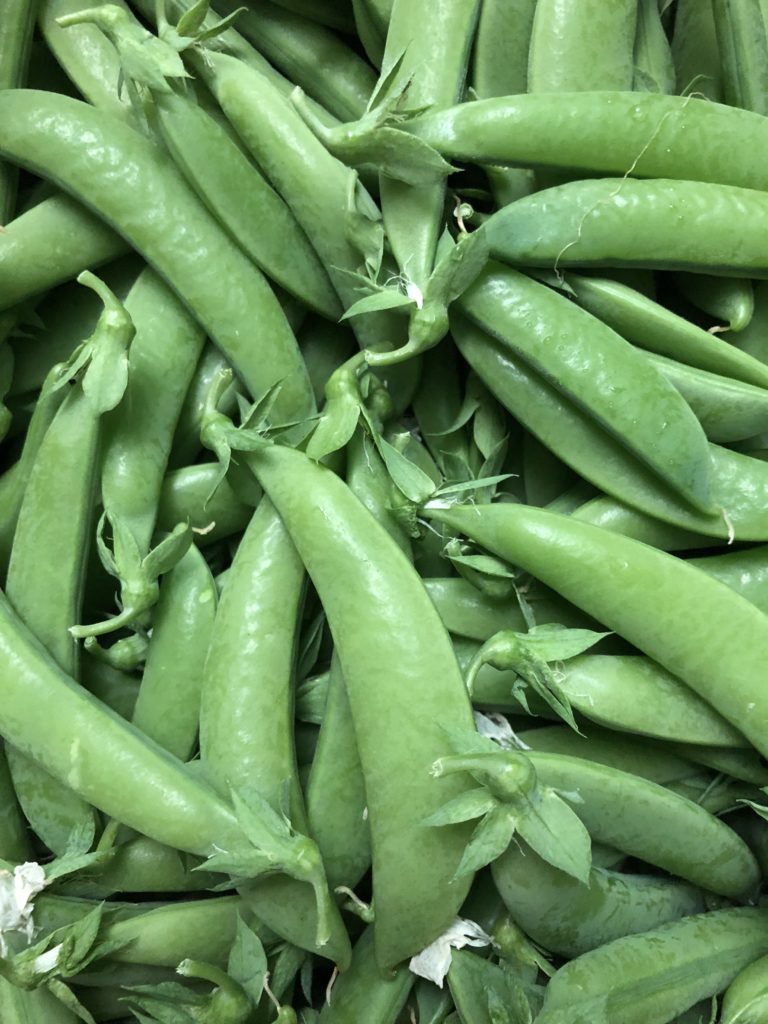
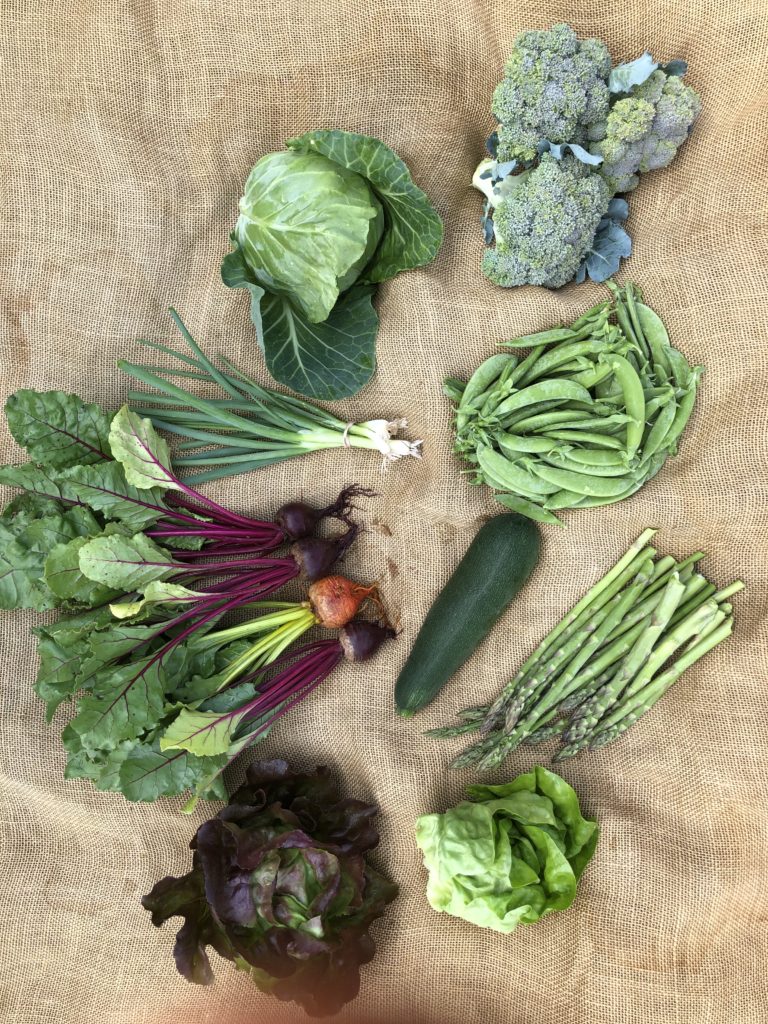
Weeding is one of the jobs most hated by the farm crew (a.k.a. my children), so we have chosen to use hay as mulch in the walkways. The hay suppresses weeds, conserves moisture and adds organic matter to the soil. We were able to get the hay down in the permanent beds by the end of May, which means minimal weeding for the rest of the summer. Hay mulch is definitely a win!
The tomatoes and cucumbers in the high tunnel are trellised. The first year we grew tomatoes in the high tunnel we trellised them on wooden stakes like we trellis the tomatoes in the field. The tomato plants grow so much bigger in the high tunnel that they needed something taller. So to trellis we use tomahooks, which are hooks with twine hanging down from the top of the high tunnel. The tomatoes will grow to the top of the trellis, which is about 10 feet tall, and then we will start to lean and lower the tomatoes but more about that later in the season.
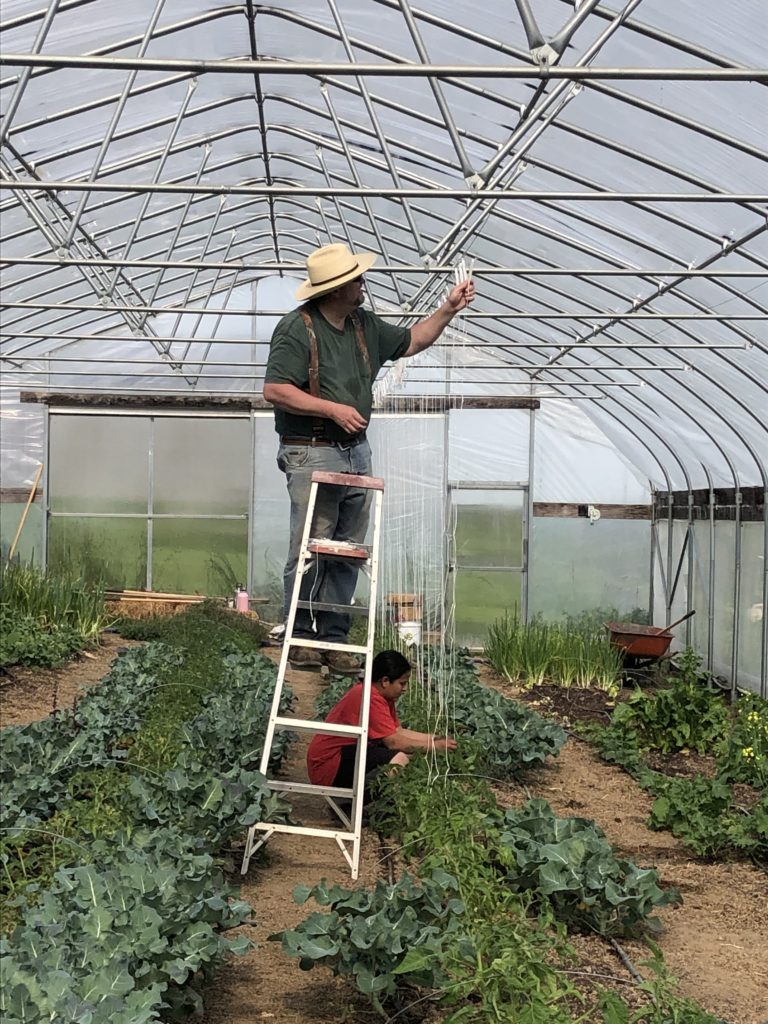
As an organic farm we don’t use insecticides, fungicides, herbicides, or synthetic fertilizers and this allows pollinators, beneficial insects that eat the bad bugs, and toads to thrive on our farm. In the photo below you can see a ladybug larva searching for aphids to eat. Also in the photo on the okra leaf is a small, round brown object. That is an aphid mummy. Aphid mummies are formed by a small parasitic wasp (these are tiny and do not harm people) that lays an egg inside a live aphid. The wasp egg hatches and the larva lives inside the aphid and eats it. The parasitized aphid dies and dries up to this aphid mummy. These aphid mummies are good to see because it shows there are the tiny, parasitic wasp around since the wasp are too small to see easily.
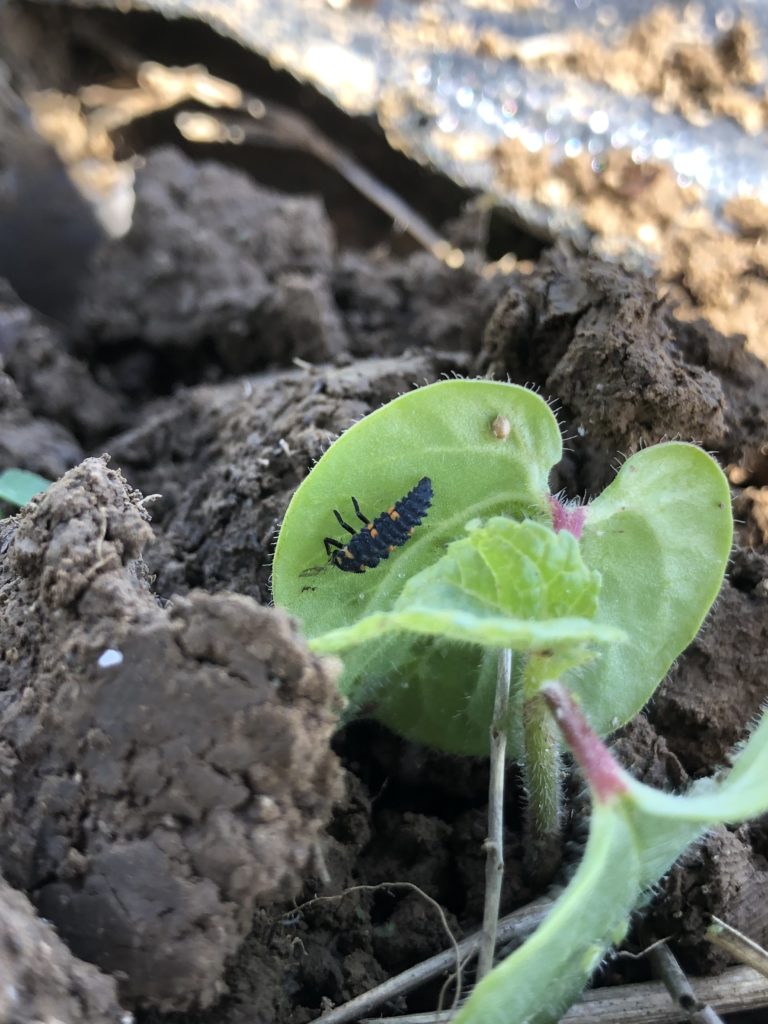
Calendulas are blooming! Calendula are edible flowers that attract pollinators like honeybees and hummingbirds. The flowers have many uses but we are trying to dry the flowers this year so we can make tea. We also use the fresh ones in flower arrangements.
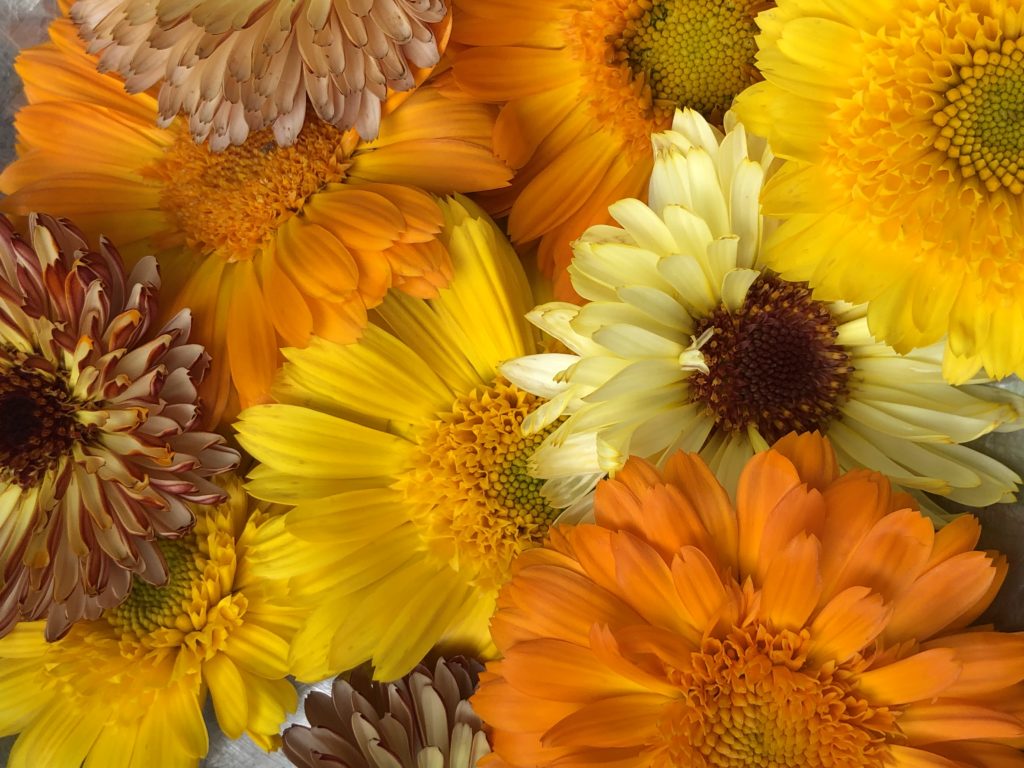
Despite the busyness of May, we have enjoyed seeing the plants grow and particularly enjoyed having the fresh produce, both for ourselves and for others.